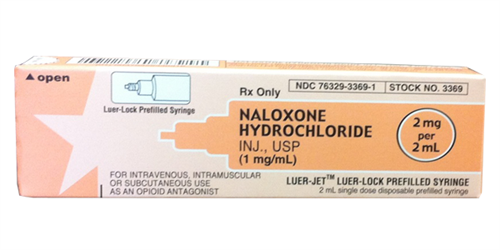Learning from Italy’s lead on Naloxone
In the U.S. where an epidemic of overdoses from heroin and other opioids is front-page news, it is becoming more widely accepted that people who use drugs and their communities should have access to naloxone, an overdose antidote, in case of an emergency.
10 Apr 2017Indeed, by 2014, U.S. harm reduction programs—which focus on offering drug users choices that can help them protect their health—had given more than 152,000 laypeople naloxone kits, resulting in more than 26,000 overdose reversals. However, this simple harm reduction intervention has been slow to gain traction in many other countries. Obstacles include laws that prohibit ordinary people from providing injections, as well as a reluctance to put these tools directly in the hands of drug users—often over fears this will lead to riskier behavior.
That isn’t the case in Italy, however, where naloxone has been available in pharmacies without a prescription for over 20 years; in 1996, Italy’s Health Ministry officially classified naloxone as an over-the-counter medication and obliged pharmacies to carry it in sufficient supplies. Perhaps even more importantly, harm reduction services there have distributed it since the early 1990s, thanks to doctors at the public drug addiction services who saw a dramatic rise in the number of overdose deaths at the time. These doctors, at the local level and on their own volition, decided to take responsibility for allowing harm reduction staff to distribute naloxone to drug users. This history is recounted in a new report by Forum Droghe, which explores the results of this pioneering intervention.

What can the Italian experience teach us?
Having naloxone in pharmacies doesn’t necessarily mean people will buy it there.
In the report’s survey of 204 drug users from all over the country, only one person normally bought naloxone at a pharmacy, and only four had ever bought it there.
There are a few reasons for this: stigma on the part of pharmacists, the fact that not all pharmacies actually stock naloxone (despite the legal requirement), and the cost. Even at an average price of about €3.50 (US$3.80), it’s more than many drug users are willing to pay.
Making naloxone available through harm reduction programs is critical.
Drug users did, however, get naloxone from harm reduction programs. The research found that naloxone provision, in some cases, increases trust in harm reduction services and “creates an occasion for a more intense therapeutic relationship.” In Italy, harm reduction programs get naloxone from local hospitals, which purchase it through local health budgets (at an average cost of €2.07 per vial in 2016).
For other countries, this means that it is important to keep the list price of naloxone low. In the United States, where prices have increased exponentially, harm reduction programs may have trouble purchasing the naloxone they need.
Click here to read the full article
If you have any comments please tweet us @idhdp or visit our facebook page
Doctors can lead the way to healthier drug policies – join IDHDP now
Share this on: